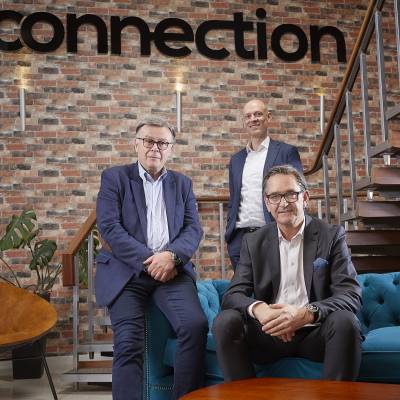The rise of the Work Café
![]()
It is quickly becoming clear that the companies who adapt and evolve in the modern business landscape, win, and this is no truer than when discussing the workplace. The needs and wants of employees are, for the most part, pretty straightforward. Most workers have basic requirements; functioning Wi-Fi, daylight, comfort and socialisation, to name but a few, all of which are relatively simple to implement upon delivery but require sophisticated planning and design and an over-arching company culture which supports them, with the work café emerging as an efficient solution in meeting these requirements.
A recent study conducted by Gensler, claims that over half (52%) of US workers prefer a hybrid working style, mixing home and the office, detailing their ability to be both productive and happy, with a greater work-life balance. Whilst this seems like an easily achievable goal for organisations at first glance, hybrid working requires complex workplace design, as well as balancing logistics to ensure individual workers are happy. However, when done correctly, the result can be transformational and has the potential to push collaboration and ultimately, innovation.
A trend which has seen significant growth as a prominent hybrid working solution is the work café. The work café is designed under a couple of incredibly basic assumptions, people like coffee and the ability to work in a relaxed environment.
That being said, the overall concept taps into something far more primitive, an idea named ‘third places’, initially put forward in urban sociologist Roy Oldenburg’s 1991 book The Great Good Place. The basic premise presented was the significance of third places in community dynamics, alongside first (home) and second (work) places. This idea was further enhanced in his 2000 book Celebrating the Third Place, which identified third places as public areas in which people could gather, interact, and collaborate.
Coffee houses are a prominent example of a third place and are a vital function in the strength of a community. Whilst on the surface this is a seemingly dramatic take, third places, in this case work cafés, are able to level out social hierarchies, giving individuals the psychological impetus to meet and collaborate with colleagues in an environment which feels less like work and fosters collaboration.
A key factor to understand and consider when successfully integrating work café spaces, is that they should exist to be a destination space within the office, rather than as an area for a short stay. Particularly for those challenged by square footage, they can be an essential asset, and one which must be sweated. Ensuring that a work café fulfils multiple functions is imperative to both the wellbeing and productivity of the employee, as well as the bottom line of their employer.
Although not a new concept by any means, the blending of spaces to create multi-functional office environments is now really coming to the fore as a direct result of the pandemic. As a result, work cafes will become more common and more popular with employees, who now desire and in some cases demand, more suitable workspaces to fulfil their potential.
Written by George Eltringham, Digital Marketing Manager


